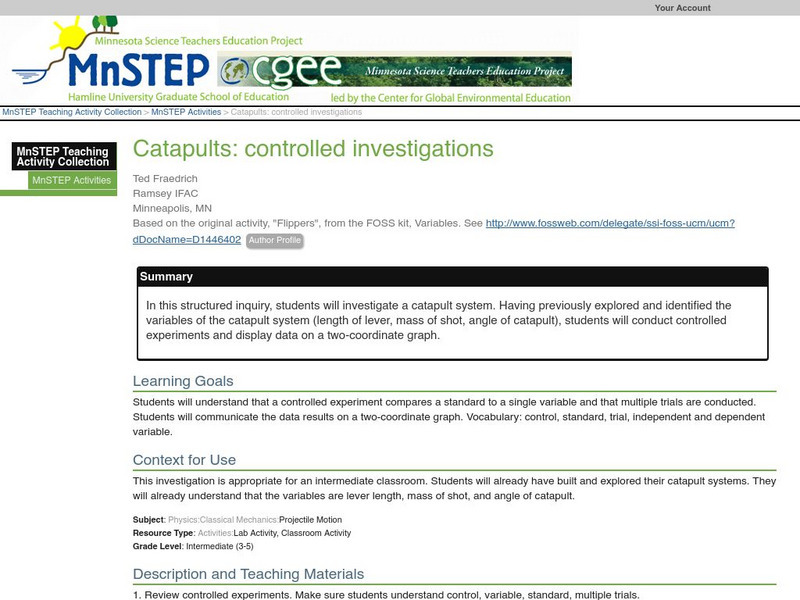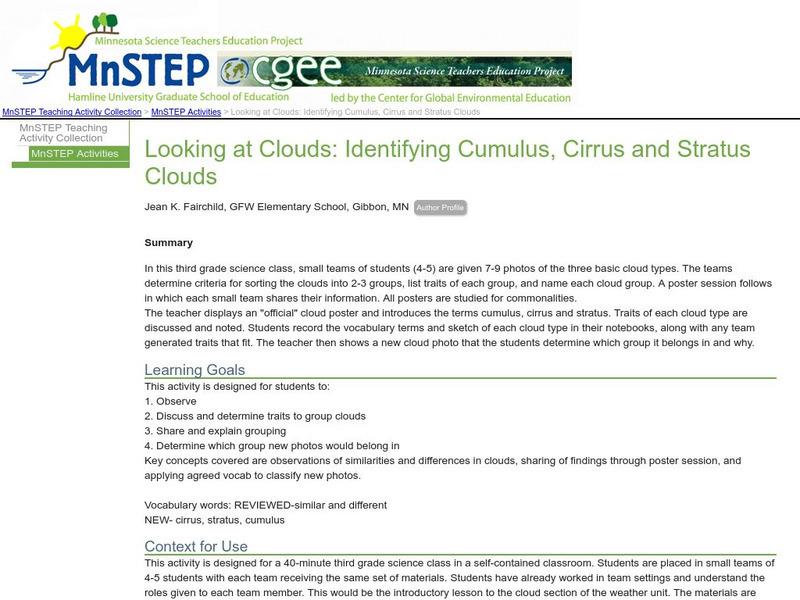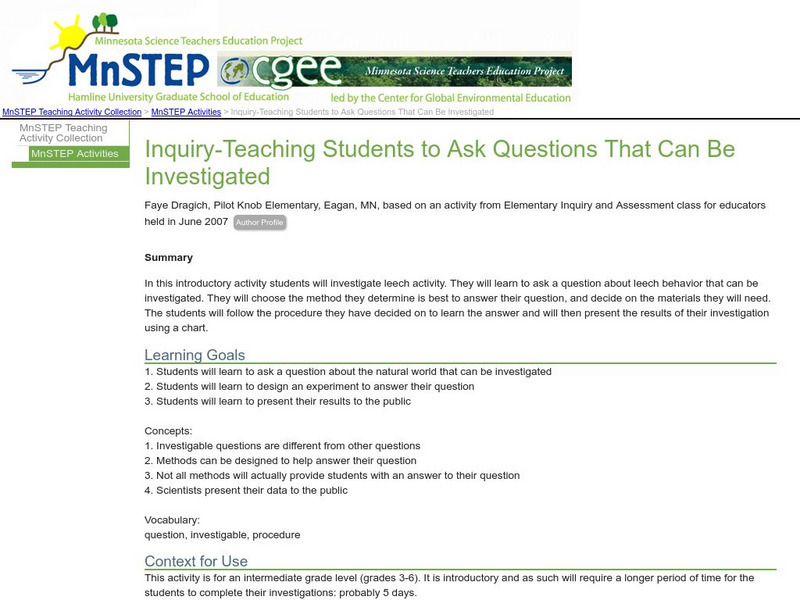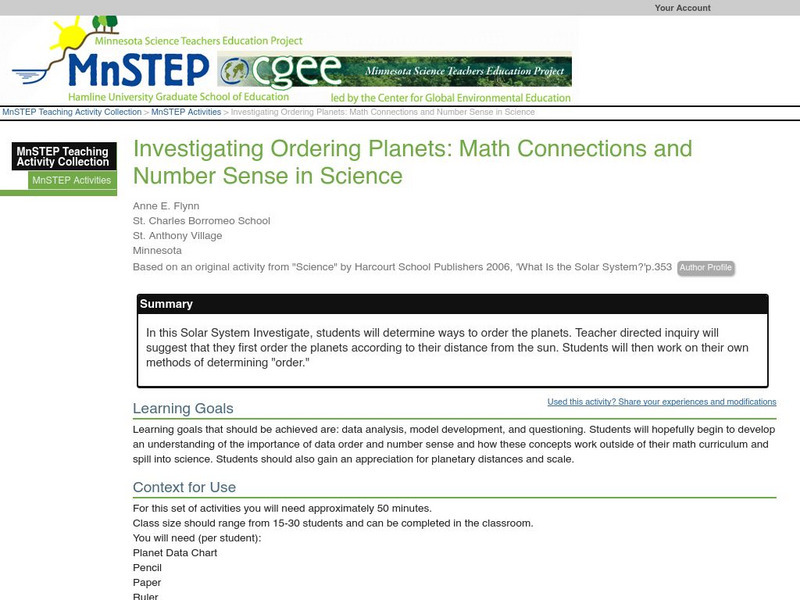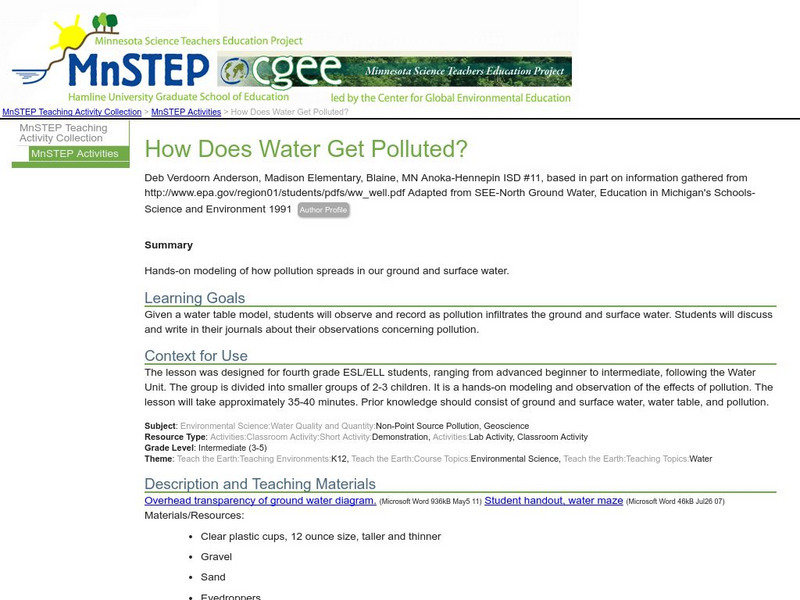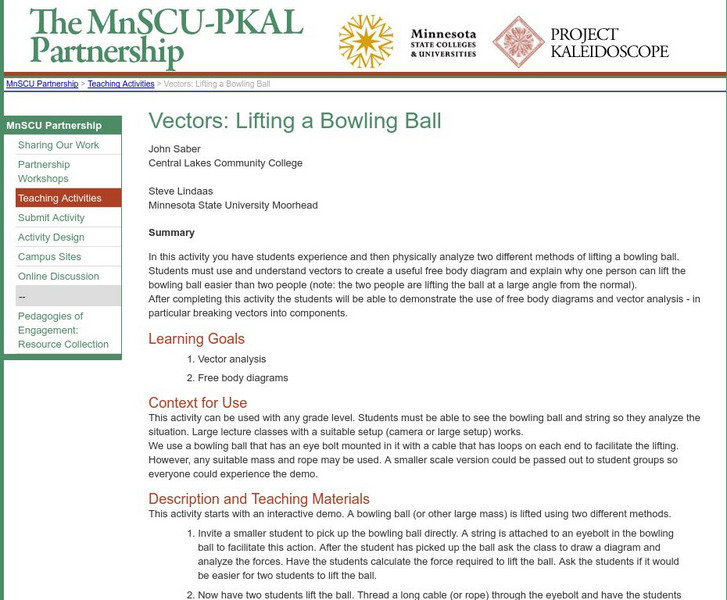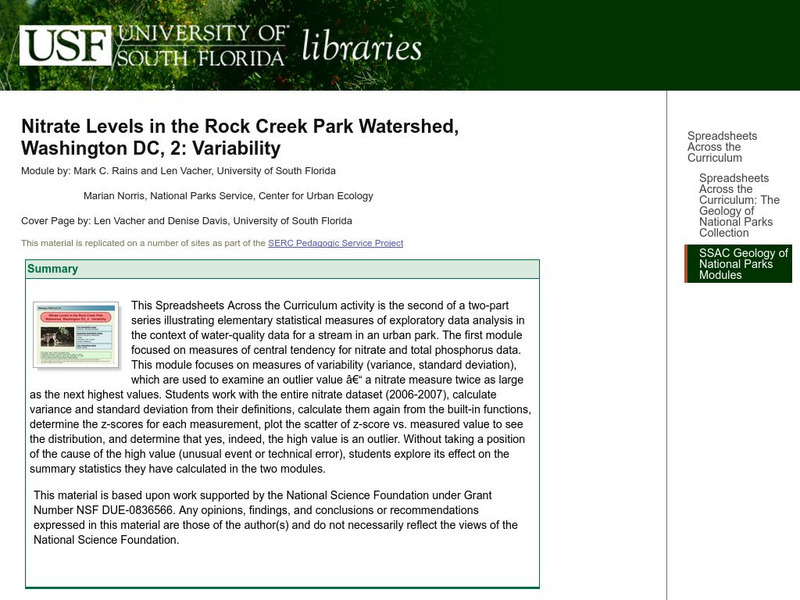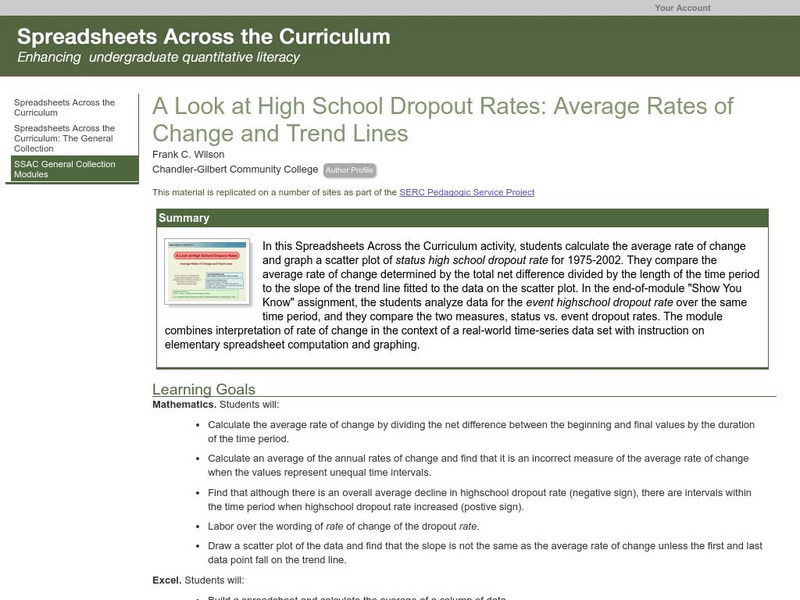Science Education Resource Center at Carleton College
Serc: Investigating Motion: What Causes Objects to Move?
Young scholars will have an opportunity to determine what makes everyday objects move. Students will be given objects and asked to make predictions on how far each object will move after they blow on it. Then they will measure the...
Science Education Resource Center at Carleton College
Serc: Investigating Light: A Form of Energy You Can See
Learners will investigate how light is a form of energy that travels as waves away from the source. The basis for this lesson plan is taken from the Houghton Mifflin science curriculum. In the lesson plan experiments, students will...
Science Education Resource Center at Carleton College
Serc: Investigating Forces: Balloon Car Activity
In this activity, teams of students build a car out of common materials which is then propelled by the release of air out of a balloon and must travel a minimum distance. The activity is then extended to a competition to build the car...
Science Education Resource Center at Carleton College
Serc: Catapults: Controlled Investigations
In this structured inquiry, students will investigate a catapult system. Having previously explored and identified the variables of the catapult system (length of lever, mass of shot, angle of catapult), students will conduct controlled...
Science Education Resource Center at Carleton College
Serc: Looking at Clouds: Identifying Cumulus, Cirrus and Stratus Clouds
Using photos of the three basic cloud types, small groups of students will sort the clouds into 2-3 groups, list traits of each group, and name each cloud group. They will share their information on posters which are studied for...
Science Education Resource Center at Carleton College
Serc: Investigating Earth Materials: Collecting and Classifying
Activity investigates what Earth materials are made of. Students will go out and collect non-living earth materials that will fit in a small plastic bag then sort the material to discover ways of classifying what they have gathered....
Science Education Resource Center at Carleton College
Serc: Inquiry: How Herbs Change Based on Growing Conditions
In this activity, students will develop writing, math, and inquiry skills by investigating the taste of basil. Students will test basil in different growing conditions while also comparing it to a controlled variable. Students will then...
Science Education Resource Center at Carleton College
Serc: Levers: How the Human Body Uses Them to Its Advantage
Students will apply the concept of levers to the human body and build all three classes of levers within a musculoskeletal context. They will be shown how the musculoskeletal system is a system of levers and one example of each type of...
Science Education Resource Center at Carleton College
Serc: Incompressibility of Liquids
A cool science demo where students observe bottles full of water drop their bottoms out!
Science Education Resource Center at Carleton College
Serc: Guided Leech Activity and Record Keeping in a Science Notebook
Students observe leeches, develop questions about them, and decide as a class which question to investigate further as an inquiry activity.
Science Education Resource Center at Carleton College
Serc: Inquiry Teaching Students to Ask Questions That Can Be Investigated
In this activity, students will investigate leech activity and learn to ask a question about leech behavior that can be investigated. They will design an experiment to answer the question and present their results using a chart.
Science Education Resource Center at Carleton College
Serc: Magnify It
In this lesson, students will view their finger from various viewing distances to discover that their visual field is limited and a magnifying glass is a tool that can help make something look bigger. Students will record what they see...
Science Education Resource Center at Carleton College
Serc: Investigating Motors and Magnetism
Students will build a simple DC motor out of metal coat hangers, a 24-guage wire armature and field magnet, 14-guage wire brushes, and build the motor so that it rotates when connected to a 10-volt DC power supply. Students will...
Science Education Resource Center at Carleton College
Serc: Investigating Sound: Using Open Tubes to Demonstrate Beat Notes
In this interactive demonstration, students will observe while the teacher creates two sound frequencies using open tube resonators of nearly identical length. The nearness in length produces two slightly different frequencies which...
Science Education Resource Center at Carleton College
Serc: Investigating Ordering Planets: Math Connections & Number Sense in Science
In this Solar System Investigate, students will determine ways to order the planets. Teacher directed inquiry will suggest that they first order the planets according to their distance from the sun. Students will then work on their own...
Science Education Resource Center at Carleton College
Serc: Power Generation Town Council
Students will work together to implement decision-making processes used by governmental agencies to select a power generation system for a small town. This will enable students to develop critical thinking and questioning skills while...
Science Education Resource Center at Carleton College
Serc: Investigating Speed and Velocity
In this investigation, students will work in groups to design a model roller coaster, which will be used to clock the fastest speed for the rider (ball bearing/marble) The groups will build roller coaster models and modify and adjust...
Science Education Resource Center at Carleton College
Serc: How Does Water Get Polluted?
Given a water table model, students will observe and record as pollution infiltrates the ground and surface water.
Science Education Resource Center at Carleton College
Serc: Vectors: Lifting a Bowling Ball
Students experience and analyze two different methods of lifting a bowling ball. By using and understanding vectors, they create a useful free body diagram to explain why one person can lift the bowling ball easier than two people
Science Education Resource Center at Carleton College
Serc: Take a Deep Breath on the Appalachian Trail
A lesson plan that includes a PowerPoint learning module for students. They will examine spreadsheet data on air quality in Great Smoky National Parks, and solve problems using ratio and proportion. The exercises will help them to...
Science Education Resource Center at Carleton College
Serc: Getting to the Point: Exploring Tectonic Motion Point Reyes Seashore
The intent of this module is for students to make straightforward numerical calculations as they learn about earthquake geology at a National Park.
Science Education Resource Center at Carleton College
Serc: Nitrate Levels in the Rock Creek Park Watershed: Meas of Central Tendency
Activity uses water-quality data from Rock Creek Park to illustrate elementary statistical measures of exploratory data analysis. The focus of the lesson is the nutrient limitation in a stream and the three measures of central tendency.
Science Education Resource Center at Carleton College
Serc: Nitrate Levels in the Rock Creek Park Watershed: Variability
Learning module focuses on measures of variability such as range, variance, and standard deviation which are used to examine nitrate levels and water quality.
Science Education Resource Center at Carleton College
Serc: Average Rates of Change and Trend Lines
In this Spreadsheets Across the Curriculum activity, students calculate the average rate of change and graph a scatter plot of status high school dropout rate for 1975-2002. The module combines interpretation of rate of change in the...





